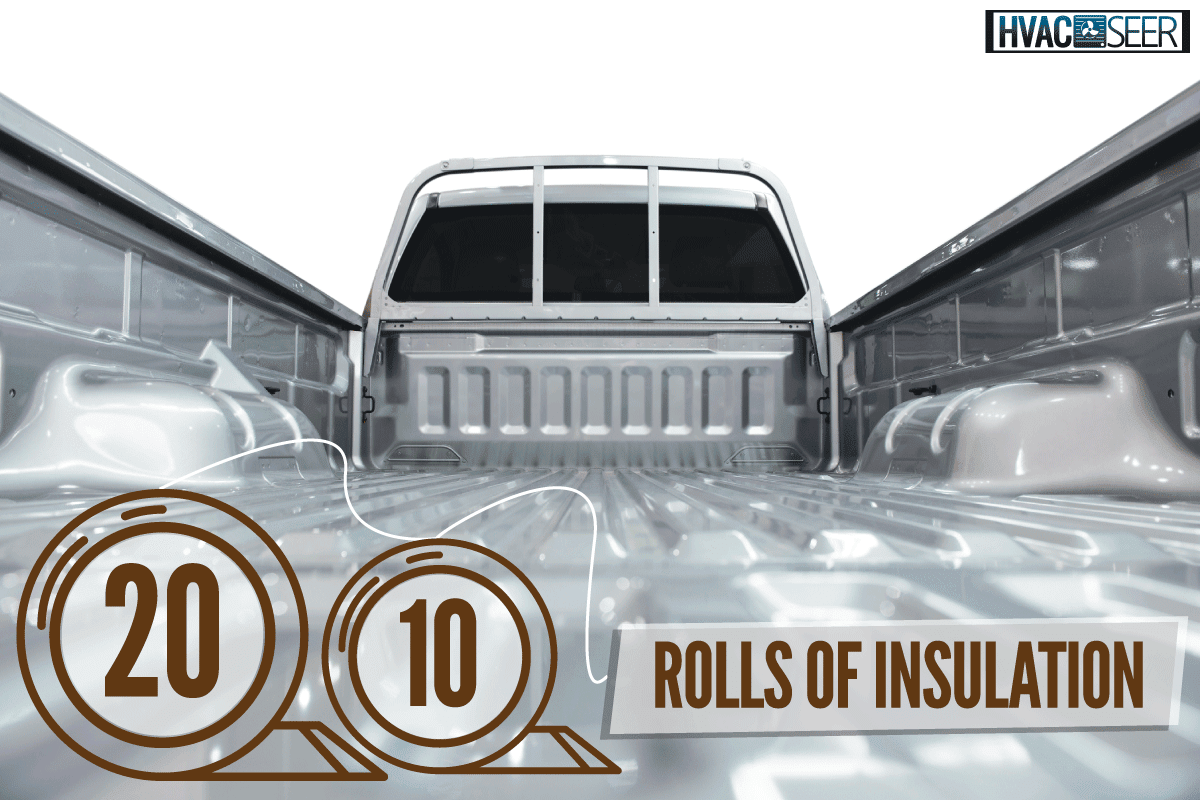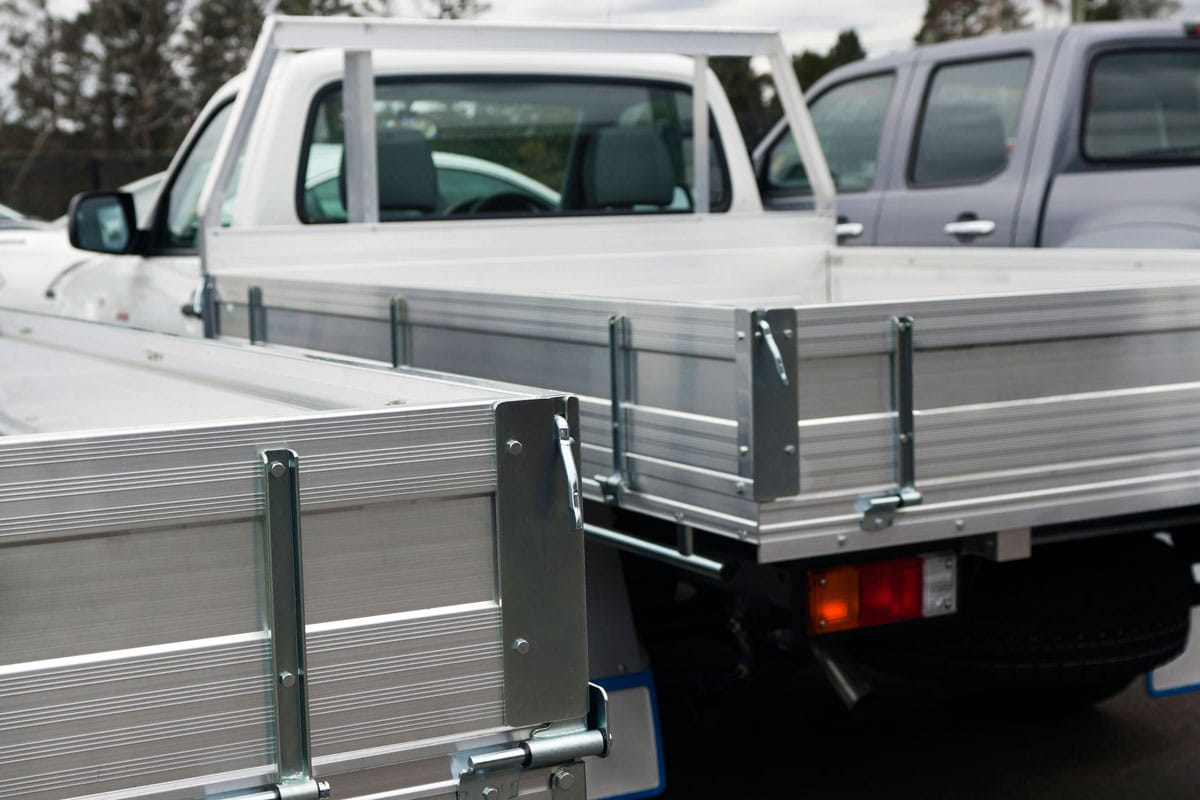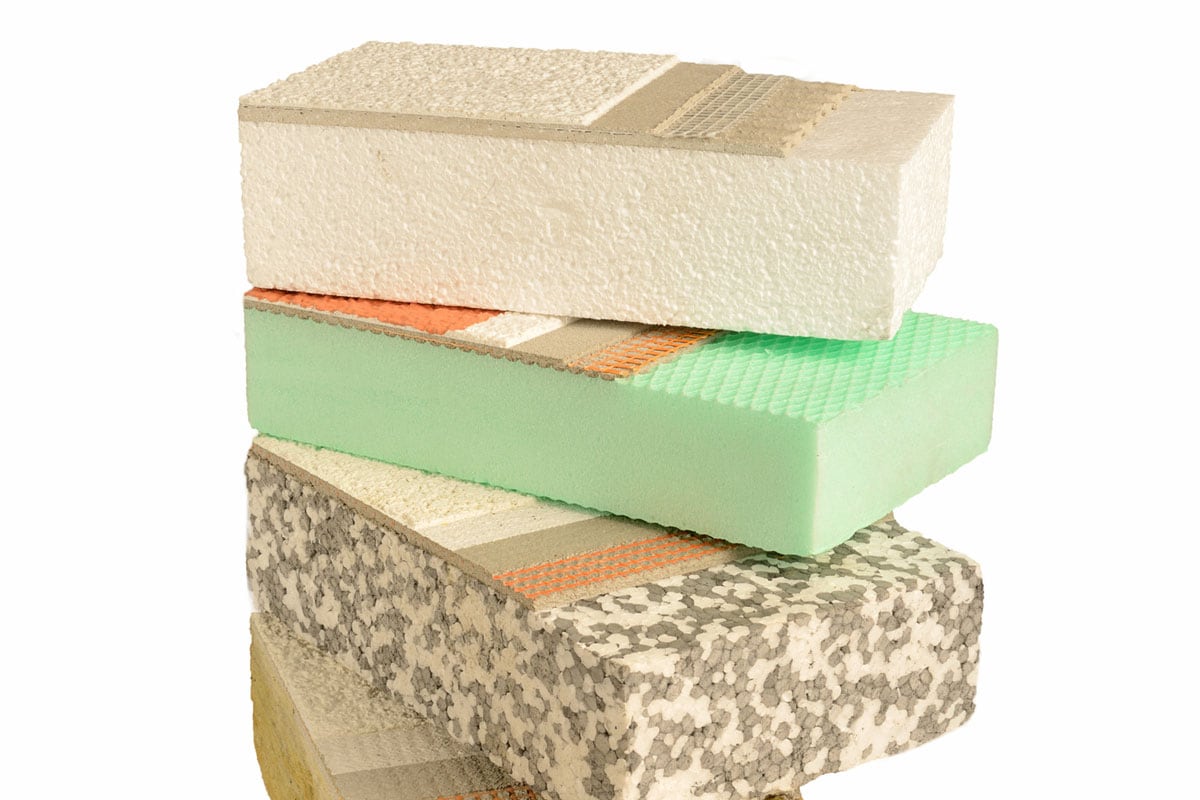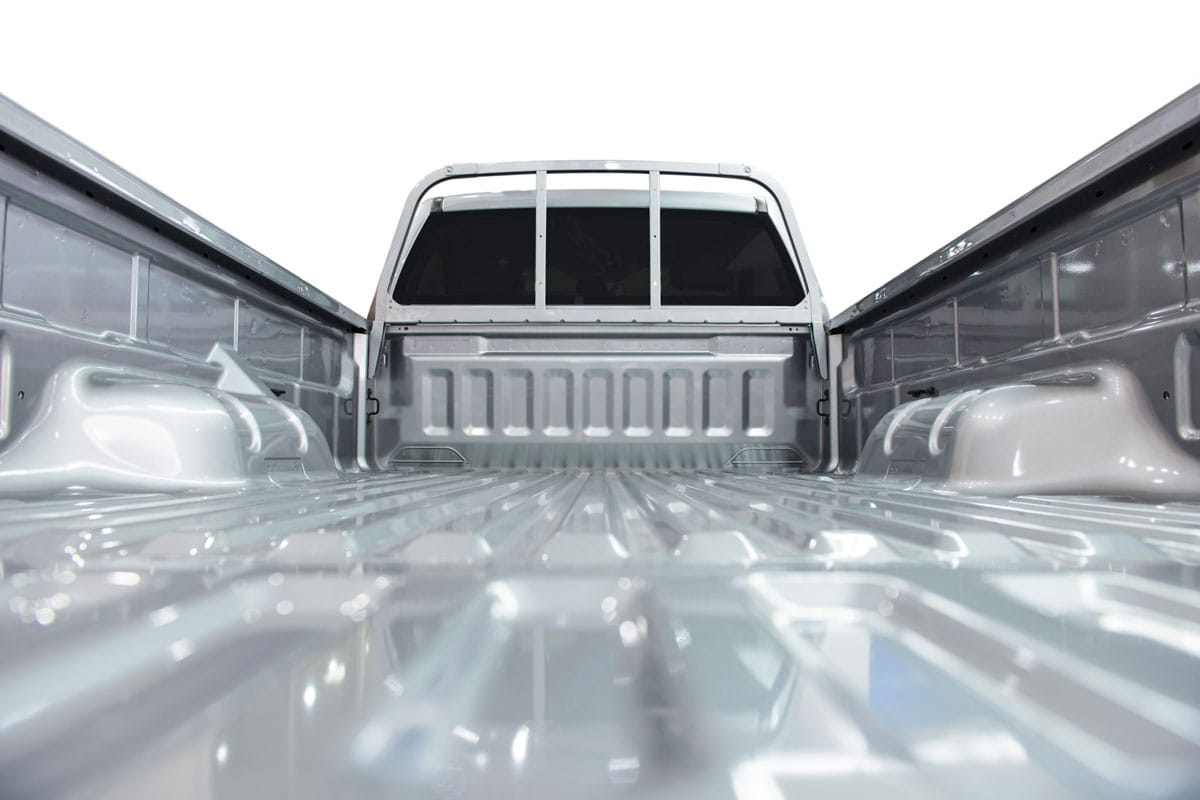Trucks are modern-day wheelbarrows. You can transport animals, building materials, tools, or plants in them. Speaking of which, how many insulation rolls can you fit in the bed of a truck? We've researched and found answers to this question.
The answer depends on the size of the truck bed and the possibility of adding an overhead rack. However, you can fit 10 to 20 rolls of insulation in an average pickup truck without overloading it.
Are you intrigued? Read on as we break down which trucks and how many rolls you can put in them.

Quantity Of Insulation Rolls A Truck Bed Can Accommodate
The number of insulation rolls you can carry on your truck bed might not be a matter of life and death, but when renovating it becomes a vital question. If you don't own a truck you might have to rent one.
Before renting the truck, you should know how many rolls of insulation you'll need. Technology has made this easy by introducing online calculators.
Once you know how many bags you need, the next step is to find out the size of truck you should rent. It also applies to the transportation of other types of insulation.

Truck Bed Sizes And How Many Insulations They Can Carry
Trucks have different bed sizes, and they can haul different load sizes. You can carry more insulation rolls if you use straps, nets, or extensions on your pickup truck.
Extra-Short Truck Beds
Truck beds between three and a half to five feet long are considered small. Subaru Baja, Ford Explorer Sport, and Ford Maverick have extra-short beds. The truck beds of these vehicles are at an average of 54.4 inches long, 30.1 inches high, and 53.3 inches wide.
They can carry at least five bags of cellulose insulation or three and a half bags of fiberglass. The beds of these trucks can be open at the back for more cargo.
Short Truck Beds
Short bed trucks are a tiny bit longer than extra-short bed trucks. However, the extra inches make a big difference in their hauling capacity.
The Nissan Pathfinder, Toyota Tacoma, Chevrolet Colorado, Honda Ridgeline, and Ford Ranger have five to six-foot beds.
The average bed size of these vehicles is 60.5 inches long, 61.4 inches wide, and 20.8 inches high. These vehicles will carry about eight bags of 33lb fiberglass or 13 bags of cellulose weighing 30 lbs each.
Standard Truck Beds
Six to six-and-a-half-foot-long truck beds are considered to be standard size. The Ram 1500, Toyota Tundra, F150, and Chevy Silverado have standard beds.
The bed size average is 78.9 inches long, 50.6 inches wide, and a height of 21.4 inches. You can fit 15 bags of cellulose weighing 30lbs each or nine 33lb bags of fiberglass in the truck bed superbly.
Long Truck Beds
These truck beds are eight feet long. Long-bed work trucks such as Ford, Dodge, GCM, and Chevy are the most popular.
They are at least 97.6 inches long, 50.6 inches wide, and 21.4 inches high. The online calculator gives an estimate of 18 bags of 30lb cellulose or 12 bags of 33lb fiberglass.
Calculate The Insulation
You should calculate the amount of insulation you need to avoid guessing games and unnecessary extra trips. If you don't know how much insulation you need, you could invite a professional or use an online calculator.
The online calculator will also indicate the time it will take to install it. To get accurate information, measure the area that needs insulation. Then indicate the information in the online calculator.
How Much Do Insulation Rolls Weigh?

Insulation comes in bags or rolls. Rolls are larger than bags, and different brands pack different square footage. The insulation bags are bundled together in fours or fives.
These bundles can weigh up to 40 pounds. A bundle is usually 4'x3'x2', and four of them will fit in an eight-foot truck bed.
How Much Do Insulation Rolls Cost
The cost of insulation is calculated per square foot. The average cost per square foot is $1.20. Therefore, the estimated cost per bag is $30 to $40. The R-value increases the cost of any insulation.
How To Transport Insulation Properly
Transporting insulation doesn't have to be a nightmare. Insulation is bulky, and the more bags you need, the heavier they become.
To keep the insulation load intact on your pickup truck, you'll need ratchet straps, nets, web straps with web brackets, or extensions. You must ensure that you don't overload your pickup truck.
Check out these Ratchet Straps on Amazon
Here is a video demonstrating how to use these tools.
Use the pickup truck cover to keep your insulation dry while transporting it. Remember not to over-speed or overtake other vehicles when carrying a bulky load.
How Much Insulation Do You Need?

Calculate how much insulation is necessary before making a purchase. Start by taking the measurements of the space you need to insulate. Multiply the length by the width but don't subtract windows and doors.
The extra insulation will go into the odd-looking cavities. Alternatively, use an online calculator or computer software for an accurate estimation. Generally, 1000 sq. ft requires at least 28 bags of R-25 value insulation.
Types Of Insulation To Use
Insulation comes in several materials, and to properly insulate your home, you'll need to choose the appropriate type of insulation.
Homeowners can choose from foam, batt, loose-fill, panels, or radiant barriers. The insulation can be in rolls, spray, or rigid form.

What To Consider When Choosing Insulation
Your insulation should work for you despite the weather changes. Ensure your insulation:
- Doesn't interfere with the ventilation.
- Shouldn't cause a dent in your budget.
- Has the correct R-value for the part of the house.
- Shouldn't cause allergies.
- Can soundproof your home ideally.
Does Insulation Affect Ventilation?
Yes, it does! Your home has to breathe while retaining the heat. Insulate your home to keep the heat in during the cold months and reduce energy bills. But, you shouldn't over-insulate your home.
Retaining too much heat in the home and not opening windows could cause mildew and mold. Poor ventilation could make allergies severe.
Can You Insulate Ventilation Systems?
Ideally, you should. Ventilation systems need to be insulated. You will reduce heat loss, and the air will stay at the desired temperature as it travels in the ventilation system.
The insulation can be on the inside or around the ductwork. There are many ventilation systems to choose from, but they all require insulation.
https://www.istockphoto.com/photo/air-duct-with-mineral-wool-gm697729554-129242035
How Building Codes Help Improve Indoor Air Quality
Building codes differ from state to state. Their main objective is to ensure that air quality in residential and commercial buildings is the best possible. Proper ventilation and insulation improve energy consumption and lower fire hazard risk.
Building codes are often reviewed due to climate change. States are also accorded flexibility because of different climate zones. Correctly implemented codes help plan for hazards adequately.
Ventilation Requirements
Fresh air keeps foul air at bay. The ventilation process can happen naturally or mechanized. It has several regulated requirements at all times.
You will require good air quality, adequate temperature, frequent air changes, and low humidity levels to in a comfortable living space.
Types Of Ventilation
In residential and commercial buildings, you'll find either one of the following types of ventilation. Their effectiveness depends on the size of the space to be ventilated. Before you install any ventilation, ensure that you understand how each works.
The different types of ventilation are:
- Mechanized-This type of ventilation is regulated, and it heavily depends on the weather.
- Spot -It's an auxiliary system that enhances any other existing system.
- Natural - Airflow occurs naturally through open doors and windows. It also flows through drafts, cracks, vents, and other openings around the house.
- Hybrid- Mechanized or natural ventilation is effective on its own. However, combined or hybrid ventilation always gives the best results.
Insulation Requirements
Keeping your home warm sometimes isn't easy. Codes and standards are different in different climate zones, but they all aim to:
- Trap warm air to avoid it leaking via cracks.
- Used and unused basement and attics should be insulated.
- Proper insulation with good-grade construction material.
- Insulated ducts.
Conclusion

The number of insulation bags that can fit in a truck bed depends on the size of the truck bed and the size of the insulation bag.
Insulate and ventilate your home to create the ideal living space.
Get some more tips from these posts:
What Air Conditioners Work With Coolbot? [And How To Install One]

